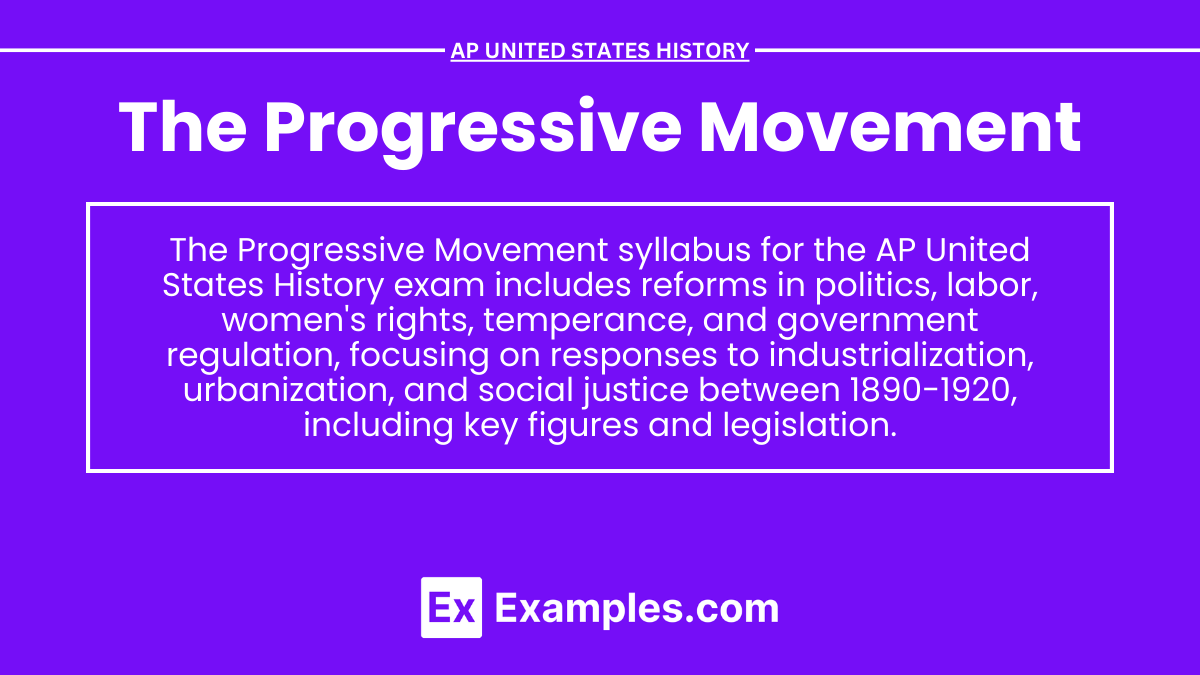In AP United States History, the Progressive Movement refers to a period of widespread social activism and political reform from the 1890s to the 1920s, aimed at addressing the issues caused by industrialization, urbanization, and political corruption. Progressives sought to improve conditions for workers, regulate big businesses, expand democracy, and tackle social injustices. Key figures, such as Theodore Roosevelt, Jane Addams, and Woodrow Wilson, led efforts to reform various aspects of American society, resulting in significant changes to government policies, labor laws, and social services.
Free AP United States History Practice Test
Learning Objectives
The learning objectives for the topic "The Progressive Movement" will include the ability to analyze the social, economic, and political factors that led to the movement’s rise. You will be expected to evaluate the key reforms enacted during this period, such as labor laws, antitrust legislation, and women's suffrage. Additionally, you will be required to assess the impact of Progressive leaders on American society and government, and how these reforms addressed the challenges of industrialization, urbanization, and corruption.
Key Goals and Achievements
Regulation of Business and Industry
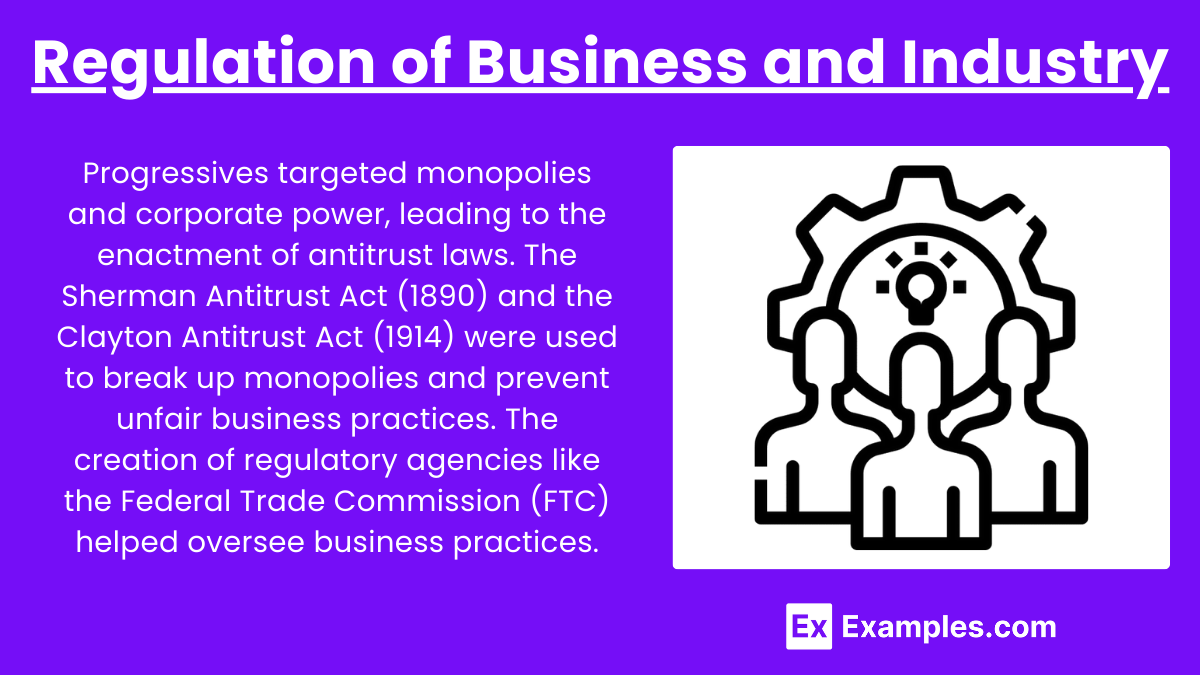
Progressives targeted monopolies and corporate power, leading to the enactment of antitrust laws. The Sherman Antitrust Act (1890) and the Clayton Antitrust Act (1914) were used to break up monopolies and prevent unfair business practices. The creation of regulatory agencies like the Federal Trade Commission (FTC) helped oversee business practices.
Labor Rights and Working Conditions
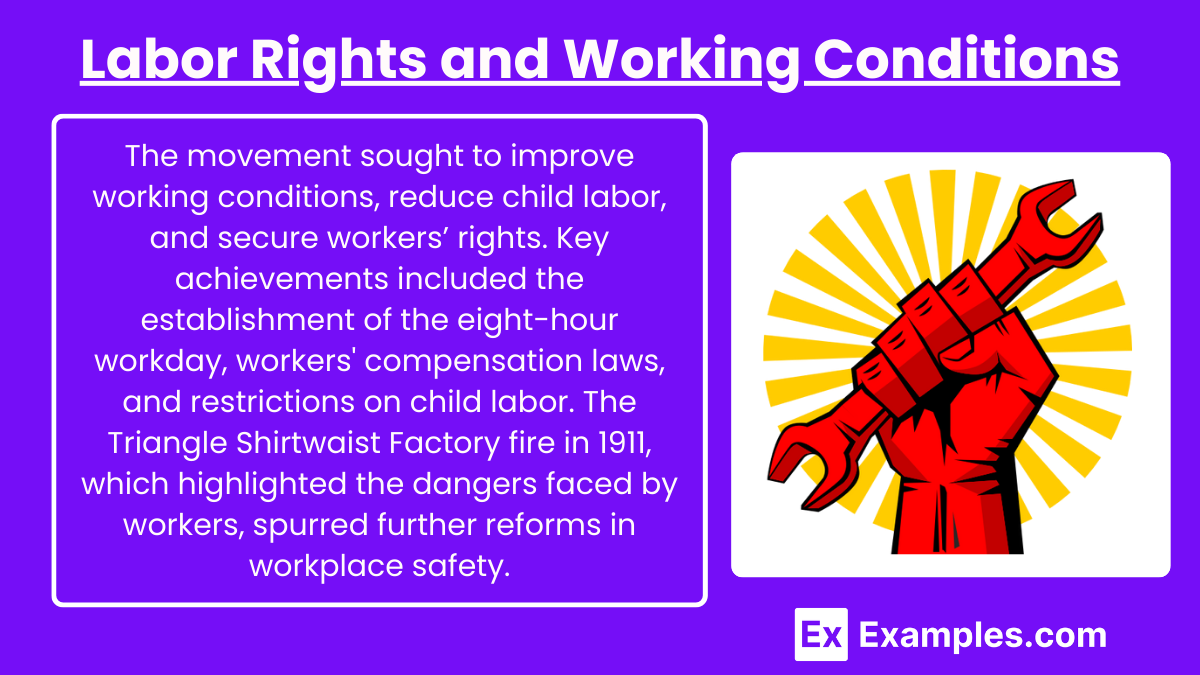
The movement sought to improve working conditions, reduce child labor, and secure workers’ rights. Key achievements included the establishment of the eight-hour workday, workers' compensation laws, and restrictions on child labor. The Triangle Shirtwaist Factory fire in 1911, which highlighted the dangers faced by workers, spurred further reforms in workplace safety.
Political Reforms
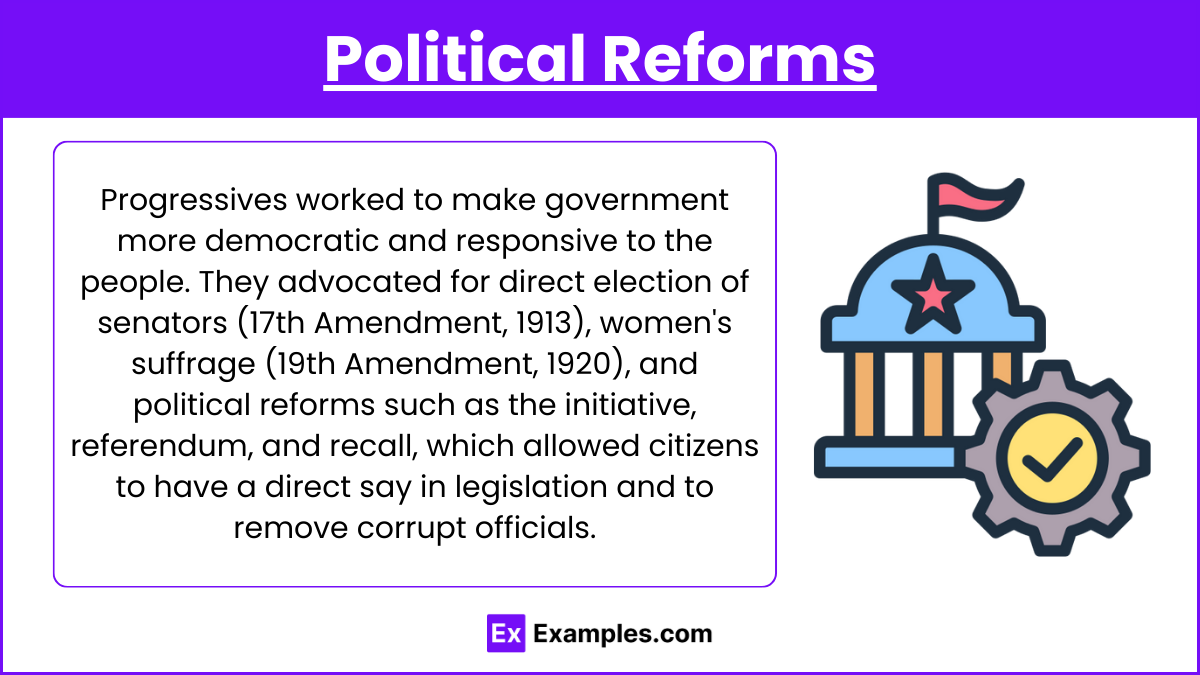
Progressives worked to make government more democratic and responsive to the people. They advocated for direct election of senators (17th Amendment, 1913), women's suffrage (19th Amendment, 1920), and political reforms such as the initiative, referendum, and recall, which allowed citizens to have a direct say in legislation and to remove corrupt officials.
Social Reforms
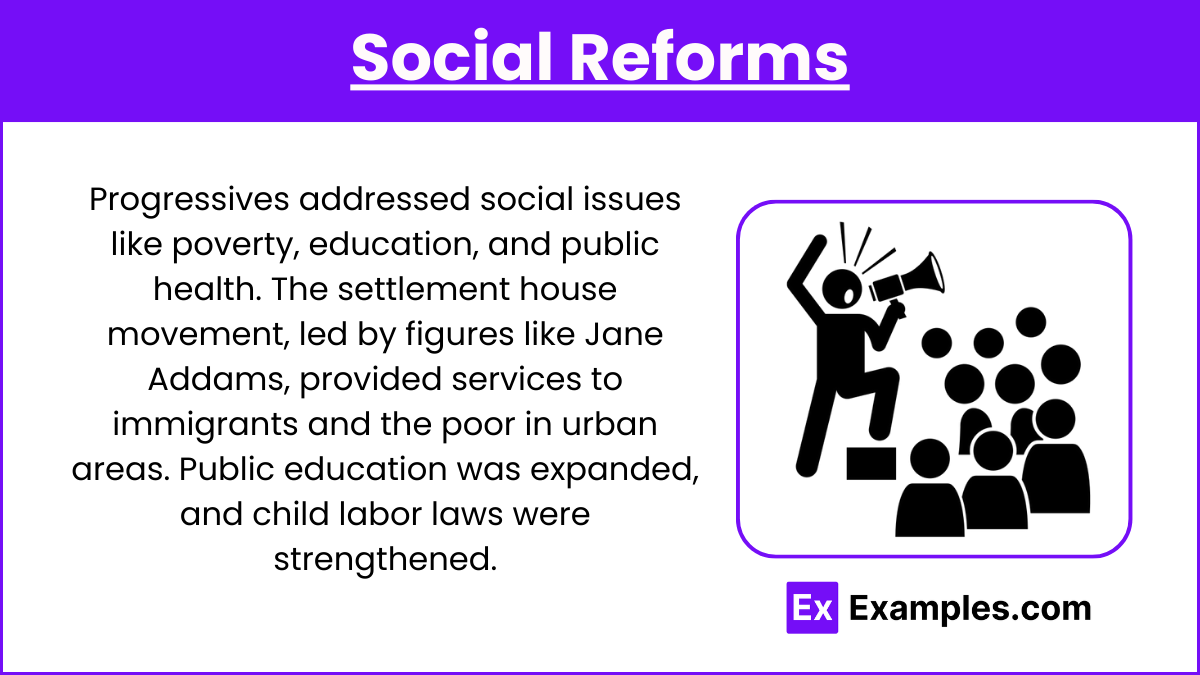
Progressives addressed social issues like poverty, education, and public health. The settlement house movement, led by figures like Jane Addams, provided services to immigrants and the poor in urban areas. Public education was expanded, and child labor laws were strengthened.
Environmental Conservation
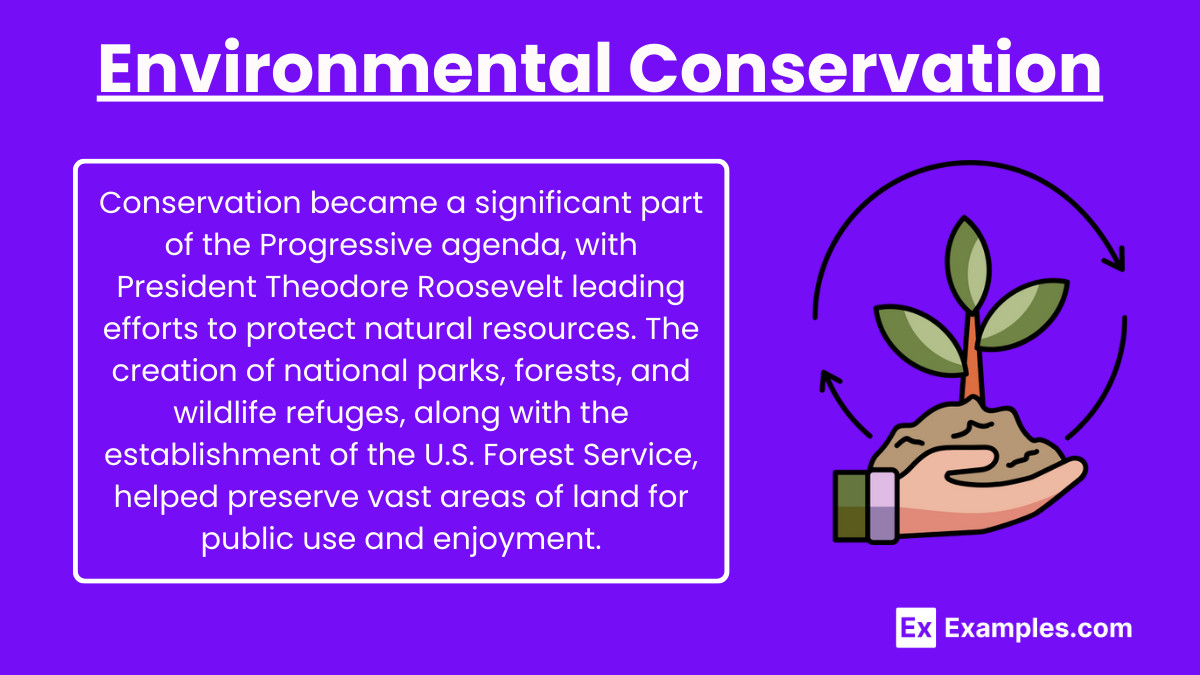
Conservation became a significant part of the Progressive agenda, with President Theodore Roosevelt leading efforts to protect natural resources. The creation of national parks, forests, and wildlife refuges, along with the establishment of the U.S. Forest Service, helped preserve vast areas of land for public use and enjoyment.
Examples
1. Sherman Antitrust Act (1890): Used to break up monopolies and regulate corporate power.
2. 17th Amendment (1913): Allowed for the direct election of U.S. senators, making the government more democratic.
3. Triangle Shirtwaist Factory Fire (1911): A tragic event that led to significant workplace safety reforms.
4. Settlement House Movement: Led by Jane Addams, provided social services to immigrants and the poor.
5. National Parks and Conservation: Theodore Roosevelt’s efforts in environmental conservation, including the creation of national parks and forests.
MCQs
Which Progressive-era amendment allowed for the direct election of U.S. senators?
A) 16th Amendment
B) 17th Amendment
C) 18th Amendment
D) 19th Amendment
Answer: B) 17th Amendment
Explanation: The 17th Amendment, ratified in 1913, allowed for the direct election of U.S. senators, making the government more responsive to the will of the people.
What was the primary purpose of the Sherman Antitrust Act?
A) To regulate child labor
B) To break up monopolies and prevent unfair business practices
C) To establish national parks
D) To promote women’s suffrage
Answer: B) To break up monopolies and prevent unfair business practices
Explanation: The Sherman Antitrust Act was enacted to curb the power of large corporations and prevent monopolistic practices that stifled competition.
Which event highlighted the need for workplace safety reforms during the Progressive Era?
A) The Pullman Strike
B) The Haymarket Affair
C) The Triangle Shirtwaist Factory Fire
D) The Homestead Strike
Answer: C) The Triangle Shirtwaist Factory Fire
Explanation: The Triangle Shirtwaist Factory fire in 1911 exposed the dangerous working conditions in factories and led to significant reforms in workplace safety.

